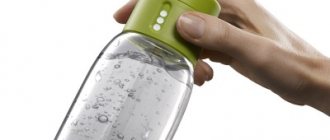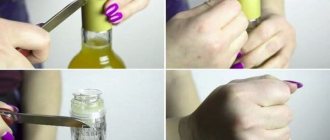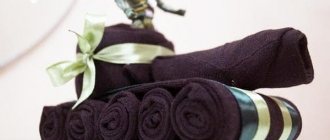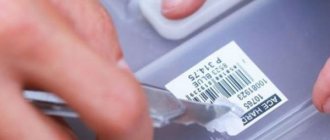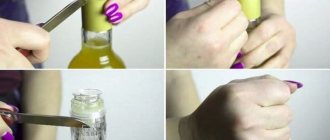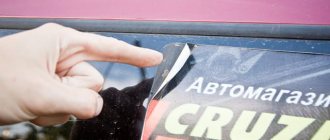From the moment the autumn cold arrives, rodents, namely mice, begin to enterprisingly move from the summer area to human apartments and houses. Every year, every owner of a private home has the need to control the infestation of mice and look for the most effective methods of control.
There are only two ways to defeat a mouse invasion if rodents have settled in a garage or house - get a cat or constantly set up mousetraps, and the more of them, the better.
The easiest option would be to make a mousetrap from a plastic bottle with your own hands. This will cost you a minimum of money, especially since there will be enough source material for the traps. If you guess with a mousetrap design from a PET bottle, then you can end the problem very quickly.
Advantages and disadvantages of the method
Mechanical traps placed in the area where mice are active are an ideal option for combating uninvited guests. For this method to work, you need a lot of catching devices. In a large area, you will have to buy several dozen mousetraps, which requires a decent financial investment. A homemade design made from plastic bottles will be almost free.
Bottle design Source vrediteli24.ru
Rodent traps need to be changed frequently. Mice pick up on subtle odors. Specimens caught in the device will leave an aroma of panic on the surface of the material. Such signals cannot be washed away, so the structure is thrown away. A homemade mousetrap has a minimal cost, which will not affect the family budget.
A rodent stuck in a trap is completely isolated. The beast will not run away to die in a secluded place. After death, the body will not begin to decompose, stink and attract insects. A caught pest can be:
- give to the cat;
- drown;
- bring far from housing.
Mouse traps are much safer than poison. Ordinary products are used as bait, rather than toxic substances. The design will not harm people or pets. Even in case of accidental contact with the device, you do not have to worry about the health of your child or pet.
A mousetrap made from a plastic bottle is inferior in efficiency to ready-made types. Store models have already been configured and tested. Mice have an excellent ability to get out of complex structures; the homemade product will have to be modernized. Rodents have strong teeth, so they can make holes in the thin walls of PET containers.
Pest control device Source setafi.com
The effectiveness of mousetraps is often influenced by the correct choice of bait. Mice are absolutely indifferent to cheese, but love salted lard. Walnut kernels and fried seeds are suitable as bait. The products have a strong odor that attracts pests.
Most mousetrap models made of plastic are designed for one charge. After the animal is caught, you need to recharge the device again. If people do not live in the house permanently, then they will have to install many structures throughout the territory. The technology is not very convenient for people who do not like to do things with their own hands.
How to catch a rodent Source 2proraba.com
DIY electronic mousetrap: diagram, instructions for use
The principle of operation of such a mousetrap is quite simple. There is a motion sensor on the mousetrap. As soon as it is triggered, a low current discharge is applied and the animal is killed. People who have a little knowledge of electronics can make such a device. Instructions for making an electronic mousetrap can be found in the video. Several electronic circuits for assembling a mousetrap are presented below.
Do-it-yourself electronic mousetrap: diagram, instructions for use Do-it-yourself electronic mousetrap: diagram, instructions for use
How to do
Pest traps should be practical and affordable. When choosing a container, preference is given to types with thick, dense walls. Let's look at 7 options for mousetraps made from plastic bottles.
Lepestkovaya
It's better to start with simple models. Making the petal design will take 5 minutes. Among the disadvantages, users note the unreliability of the device. The rodent can get out and escape from the trap, so you will have to combine it with other mousetraps.
For the model you will need an empty plastic bottle with a volume of 1.5 liters. Using a stationery knife, remove the bottom of the container. In the cut areas on the side walls, teeth in the shape of petals (triangles) are marked with a marker. The parts are cut out with scissors and bent into the structure. The tips are connected to form a tiny hole, no more than 20 mm.
A simple trap Source vdome.club
The bottle mousetrap has a simple operating principle, reminiscent of the classic store model. Bait is placed inside the device and the plug is screwed tightly. The smell of food attracts the animal. The animal follows the aroma and penetrates the container. Concave triangles allow the pest to enter the trap, but do not allow it to escape. The denser the material, the stronger it holds its shape.
falling
You can make a falling single-shot model from a plastic container. After capturing the animal, you will have to remove and reload the structure. A small hole is drilled in a capped bottle through which the rodent should freely enter. The bait is placed inside.
The container is placed on a surface slightly raised above the ground and tied to a stick by the neck. One edge of the bottle must hang down. The mouse runs to the food, which is placed at the bottom. Under the weight of the animal, the structure moves, falls and hangs on a string. A person only needs to get rid of the captive and recharge the device.
A simple mousetrap Source sezonyogorodnika.ru
With butter
To create a mousetrap from a plastic bottle you will need a container with a volume of 1-1.5 liters. The cylinder is cut into two parts with a stationery knife. The top piece should be smaller than the bottom. The element with the neck is inserted with the narrow section downwards, like a funnel. For fixation, holes are pierced in the walls with an awl. To connect, you can insert into the holes:
- toothpicks;
- matches;
- pieces of wire.
The cork is removed from the upper part, and the inside walls are lubricated with vegetable oil. The substance will complicate attempts to get out and will mask the human scent. Summer residents are advised to take unrefined sunflower, the smell of which is liked by rodents and will become an additional bait.
The main bait is placed on the bottom and the mousetrap structure is assembled. For reliability, the unit is weighted with a block glued to the base of the bottle. Penetrating into the funnel, the pest slides along the plastic and enters the lower compartment. The animal will no longer get out in the opposite direction: the narrow hole and oil on the walls are in the way. The person only needs to empty the device.
Oil trap Source survivalkit.com
Video description
Mousetrap from a bottle.
From a bucket and a bottle
An excellent mousetrap can be made from a plastic liter eggplant and a ten-liter metal bucket. Holes are drilled in the bottom and lid of the cylinder and a wire is threaded through. The structure must rotate freely. The parts are screwed to a galvanized container. To make it easier for mice to climb, a wooden plank is placed on top.
The bucket is filled with water to 1/5 of the volume, the trap is loaded with bait. The rodents try to get to the bait, stand on the moving bottle and fall down. It is difficult to catch on the smooth walls of plastic and galvanized steel.
From a bucket and plastic container Source vodatyt.ru
From 5 liter
You can make a practical mousetrap from an eggplant. Two slits are cut in the bottom of the plastic container. The resulting part resembles a narrow petal that is pressed into the middle. In the upper part, through the holes of the trap, the bait is tied to a thread. The animal gets into the structure, but because of the curved part, it cannot get out.
1.Installing the lid on the mousetrap
The mousetrap is made from two identical bottles with a capacity of 1.5-2 liters. For the first bottle, only part of the conical part is cut off, and for the second bottle, the conical part is completely cut off. The conical part of the second bottle will be the lid of the trap.
We make two symmetrical holes on the edges of the conical part of the first bottle for attaching a fishing line and hanging a bottle overturned by a rodent on this fishing line. We attach the cap to the top of the first bottle and mark the centers of two holes with a diameter of 5-7 mm coinciding with the centers of the exit holes of the suspension lines. We make holes in the lid. With our own hands we pass the fishing line through the holes in the lid and tie it to the first bottle.
First bottle Cap Line tied Line tucked
Video description
Mousetraps made from plastic bottles.
Electrical
The most difficult to implement is the electric model. The device uses a current discharge to kill rather than catch rodents. It is better to place the equipment in areas inaccessible to children and pets.
As a base, a galvanized blank is used, which is used when attaching drywall. The length of the part is 30 cm. The cut-off neck of a plastic bottle is glued to the outside and through holes are drilled. To transfer energy you need:
- cheap current converter;
- household switch;
- battery (9 V);
- stranded copper wire.
The components are sequentially assembled into a single circuit inside the profile. The cap of the glued bottle neck is unscrewed, and a steel wire (contacts) is inserted through the plastic walls. When not in use they are not connected. One of the elements is bent into the shape of a hook, and wet bait (lard) is put on it. An electrical circuit is connected to the contacts.
Homemade shocker for pests Source sdelaysam-svoimirukami.ru
The rodent climbs onto a metal stand. When you try to pull food, the elements close, and current from the power source flows into the converter. The tension increases and the animal receives a fatal blow.
Reasons for the appearance of mice in the apartment
Mousetrap
The main factor explaining the appearance of mice in a living space is food. Food supplies in the form of cereals in bags are often stored in basements and barns. If an animal finds such a tasty spot, it will definitely try to take some grains with it. The rodent will leave characteristic marks on the bags.
Important! The onset of cold weather is considered a particularly popular time for mice to move into the house. In the fall, rodents are forced to go in search of a warm shelter, and the most favorite place is considered to be a home with unsanitary conditions. Clutter, trash and food left uncovered are attractive breeding grounds for pests.
Clutter, trash, and food left uncovered are attractive breeding grounds for pests.
The presence of nuts and seeds in the house that are not tightly packed can help in getting mice. The products emit an aroma that is well captured by the sensitive sense of smell of animals.
If there are large cracks and holes in the walls or floor, then mice can easily crawl along them into the house from the street or from neighbors. It is recommended to carry out repairs in the house and tightly close all holes in surfaces.
